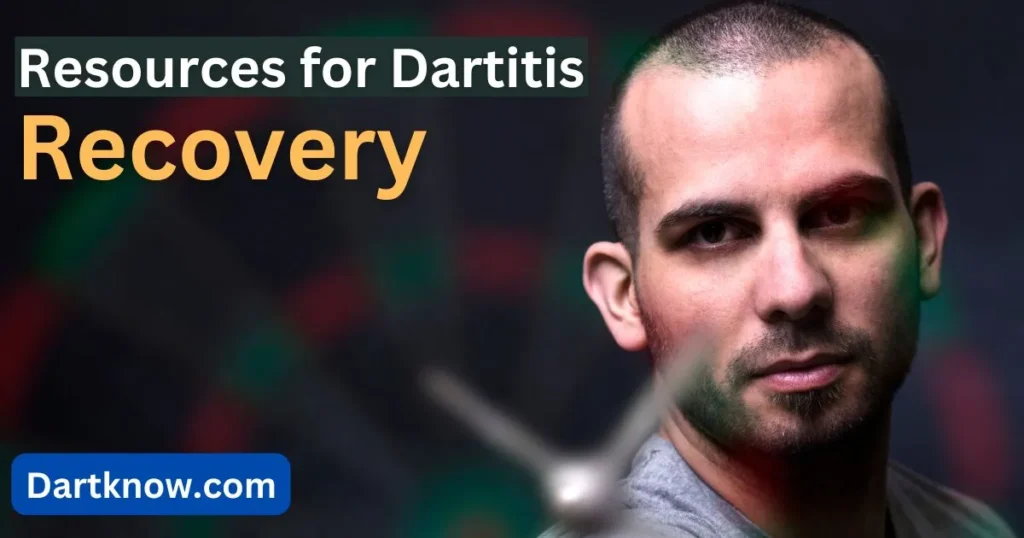What Is Dartitis and Effective Ways to Overcome It

If you play darts, you may have heard suggestions for an infection called Dartitis. Even so, how may Dartitis affect your game, and what exactly is it? What steps can you take to overcome Dartitis if you experience it yourself?
You will learn all you need to know about Dartitis from this blog. We are going to explore its definition, symbols, and common causes. We’ll also discuss professional resources, mental strategies, and physical activities that allow players to overcome Dartitis. This article will give you valuable tools to help you concentrate as you better your game, whatever your experience level.
By the end, you will have an extensive knowledge of Dartitis and be ready to tackle it head-on.
What Is Dartitis?
A medical condition known as Dartitis causes darts players to avoid or block their throws automatically. After years of improving the throw, it usually shows itself as an inability to release the dart properly. When players feel like their arm is “stuck,” it can be encouraging and disturbing.
Comparison to Similar Conditions in Other Sports
This condition isn’t unique to darts. The “yips” in golf and “free-throw anxiety” in basketball are similar problems in other sports. These involuntary changes frequently result from physical or psychological problems, emphasizing the weakness of the mind-body interaction.
Recognizing Dartitis Symptoms
Common Symptoms of Dartitis
Dartitis typically comes with clear and troubling signs, such as the following:
- Hesitation during the throwing motion.
- Difficulty releasing the dart, even when fully prepared to throw.
- Involuntary halts or jerks in the hand or arm mid-throw.
Examples from Professional Players
Some professional players have openly shared their struggles with Dartitis. Former champion Eric Bristow notably faced Dartitis, hampered his career despite his immense talent. Stories like his remind us that Dartitis can affect anyone, even the most accomplished players.
What Causes Dartitis?

Psychological Factors
One significant cause of Dartitis is anxiety or performance pressure during gameplay. Tight competitions or high expectations can overwhelm players, leading to a breakdown in their natural movements.
Physical Factors to Consider
Long practice sessions may also result in bad posture, repetitive strain, or tense muscles. Overuse or lousy technique can cause muscles to become overly tight, which can cause a disconnect between your body and mind.
Case Studies Highlighting Common Causes
A study conducted by sports psychologists showed a clear link between anxiety and conditions like Dartitis. Breaking this cycle often requires tackling the condition’s physical and mental aspects.
Explore More: How To Install EVO Darts Points?
Dartitis Cure: Is There a Solution?
Debunking Myths About Dartitis
Contrary to some claims, there’s no instant cure for Dartitis. Overcoming it requires consistent effort, including physical and mental retraining.
Differing Perspectives on Dartitis Treatment
While there isn’t a single solution that works for everyone, many players have succeeded with various strategies. Treatment responses can differ from person to person, and experimentation is often needed.
Practical Ways to Overcome Dartitis
Physical Strategies
Stretching and Strengthening Exercises
Stretching your arms and shoulders regularly can loosen tight muscles. Using resistance bands for strength training can also improve stability and endurance while playing.
Improving Muscle Control
Gentle drills that focus on establishing muscle memory are crucial. Practice repetitive, simple throws to regain confidence and fluidity in your movements.
Mental Techniques
Breathing Exercises
You can relax and restore focus by taking deep breaths. Try 5-7-8 breathing (inhaling for 5 seconds, holding for 7, and exhaling for 8).
Visualization Exercises
Before throwing, visualize yourself completing the perfect motion. Imagine how smooth and seamless the throw feels.
Alternative Approaches
Hypnotherapy as a Tool
Hypnotherapy is an increasingly popular option for addressing Dartitis caused by mental blocks. During sessions, players work to rewrite mental patterns that interfere with their performance.
Coaching and Counseling
Collaborating with an experienced darts coach or sports psychologist can provide tailored strategies for overcoming Dartitis.
Resources for Dartitis Recovery

Video Tutorials and Expert Tips
Plenty of high-quality online tutorials are made by professionals who’ve battled Dartitis. These videos share actionable tips to help you adapt and improve.
Motivational Content
Hearing from players who have successfully overcome Dartitis can inspire hope and confidence. Look for testimonials and podcasts featuring these stories.
Preventing Dartitis in the Long Term
Prioritize Mental and Physical Wellness
Use a regular physical conditioning routine, mindfulness exercises, and relaxation techniques to prevent Dartitis.
Consistency in Practice
Frequent but thoughtful practice can help keep your form sharp without overexerting your muscles. Remember, quality always outweighs quantity when improving as a darts player.
Listen to Your Body
Pay attention to sensations of strain, discomfort, or hesitation. Address these signs early to prevent them from developing into Dartitis.
FAQs
How to overcome Dartitis fast?
To overcome Dartitis fast, practice calming exercises like deep breathing and visualization. Focus on rebuilding confidence through small, consistent practice steps and positive self-talk. Seek advice from experienced players or coaches for tailored guidance.
Is Dartitis real?
Dartitis is a condition that impacts darts players physically and mentally. It causes difficulty releasing the dart due to mental or physical blocks. Many professional players have experienced it, proving it’s a genuine condition.
How to cure Dartitis?
Curing Dartitis involves mental strategies, physical exercises, and addressing stress triggers. Try relaxation techniques and consistent practice routines to ease your mind and muscles. Consulting a sports psychologist or using hypnotherapy can also help with mental blocks.
Can you recover from Dartitis?
You can recover from Dartitis with patience, consistent effort, and professional help. Many players overcome it by improving their mental focus and practicing regularly. It’s important to stay positive and believe in gradual improvement.
How does Dartitis occur?
Dartitis occurs due to anxiety, performance pressure, or physical strain from over-practice. Mental overthinking and stress interfere with your natural throwing motion. Repetitive muscular use or poor technique can also cause the disease.
Conclusion
While many players have shown that it is possible to overcome Dartitis, it can be a difficult and frustrating procedure. Early symptom recognition and consistently working on mental and physical adjustments are crucial.
Use tools like hypnotherapy sessions, sports coaches, or video lectures if you have problems. Remember to treat yourself patiently and acknowledge little achievements along the way.
Dartitis doesn’t have to be the end of your darts career if you are determined and use the correct methods. Keep improving your skills, maintain your positive outlook, and renew the excitement that drew you to darts. You’re strong!




